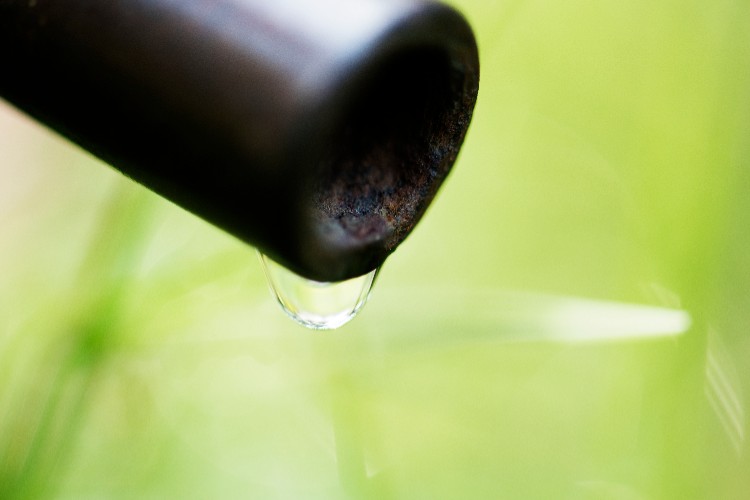Is Sodium Hypochlorite Safe for Drinking Water?

Introduction: The Truth Behind the Tap
Every time I pour a glass of drinking water, I feel grateful. But a small thought always lingers—what really keeps this water safe? The answer often points back to one key disinfectant: sodium hypochlorite.
So let’s answer the big question once and for all: Is Sodium Hypochlorite Safe for Drinking Water?
What Is Sodium Hypochlorite Anyway?
Most people know it as liquid bleach. In science terms, it’s NaOCl, a sodium, oxygen, and chlorine compound.
This sodium hypochlorite solution fights harmful bacteria and viruses in water systems. When added correctly, it makes sure disinfected water reaches every home, school, and workplace.
Why Water Systems Rely on It
Water treatment processes need a disinfectant that is strong yet safe. Sodium hypochlorite ticks all the boxes:
· It kills bacteria and viruses within 30 minutes.
· It works at low concentrations like 0.8% sodium hypochlorite.
· It offers stable storage compared to chlorine gas.
· It balances cost and effectiveness better than chlorine dioxide.
Without it, our water supply would be far more vulnerable.
Everyday Benefits of Sodium Hypochlorite
· Keeps tap water free of pathogens.
· Reduces the spread of waterborne diseases.
· Enhances overall water quality.
· Protects municipal water systems against contamination.
For something that sounds scary, it’s actually our best friend in water disinfection.
Is Sodium Hypochlorite Safe for Drinking Water?
The short answer—yes, when controlled carefully. Think of it like salt in cooking.
The right amount of water with sodium hypochlorite tastes fine and keeps us safe. Too much makes it unpleasant. Too little lets harmful microbes survive.
That’s why operators monitor treated water at every stage.
Safe Levels in Treated Water
The World Health Organization recommends that free chlorine in disinfected water stay below 4 mg/L. This balance keeps drinking water safe without creating strong bleach flavors.
In most municipal water systems, sodium hypochlorite solution gets added at just the right dose, then given a minimum of 30 minutes of contact time before distribution.
How Water Treatment Plants Use It
I’ve seen firsthand how treatment plants manage the process. It always follows clear steps:
1. Raw water enters the facility.
2. Filtration removes sand, dirt, and larger particles.
3. Operators add sodium hypochlorite solution.
4. The system allows 30 minutes for proper disinfection.
5. Treated water flows into municipal water networks.
Every glass of tap water you drink has gone through this invisible yet powerful journey.
Why Not Use Alternatives?
It’s a fair question. Let’s compare:
· Chlorine dioxide is strong but harder to store.
· Hypochlorous acid works well but lacks long-term stability.
· Chlorine gas is effective but poses safety hazards.
Sodium hypochlorite wins because it balances safety, storage, and cost.
Taste and Smell Concerns
Let’s be honest—sometimes tap water smells like a swimming pool. That’s sodium hypochlorite reminding us it’s working. While the taste can feel off, it doesn’t mean the water is unsafe.
A little humor: nobody orders “liquid bleach on the rocks.” Still, regulators set limits so we never reach that point.
When the Balance Breaks
Too much sodium hypochlorite in the amount of water can cause:
· Strong bleach odor
· Sharp taste
· Dry mouth
Too little allows bacteria and viruses to slip through, which is worse. That’s why monitoring never stops.
Comparing Disinfectants in Water Treatment
Method | Strengths | Weaknesses |
Sodium Hypochlorite | Affordable, effective, reliable | Taste if overdosed |
Chlorine Dioxide | Strong and powerful | Expensive, unstable |
Hypochlorous Acid | Natural, safe | Poor stability |
Chlorine Gas | Very effective | Hazardous handling |
Water treatment processes always weigh these trade-offs. That’s why sodium hypochlorite keeps its top spot.
Other Uses Beyond Drinking Water
Sodium hypochlorite doesn’t stop at tap water. It also supports:
· Swimming pools
· Food safety plants
· Hospital sanitation
· Cooling towers in industry
Every sector benefits from its disinfectant properties.
Why We Trust Sodium Hypochlorite Generator
Working in the water treatment field, I’ve seen sodium hypochlorite generators protect communities every day. It may sound chemical and harsh, but it gives us peace of mind. When people ask if a sodium hypochlorite generator is safe for drinking water, I always answer with confidence: yes, when applied with care.
Sodium Hypochlorite is not just liquid bleach—it’s the invisible guard standing between us and illness.
Quick Facts to Remember
· Safe levels remain under 4 mg/L
· Works within 30 minutes of application
· 0.8% sodium hypochlorite solution is common in systems
· Used in municipal water worldwide
· Ensures tap water quality for billions
Final Thoughts
Clean water is not a luxury; it’s a necessity. Sodium hypochlorite ensures our families drink water that is not only clear but also safe. It may not sound glamorous, but without it, our water supply and our health would look very different.
So next time you pour a glass, raise it to science. That simple sip proves the answer: Yes, sodium hypochlorite is safe for drinking water.
